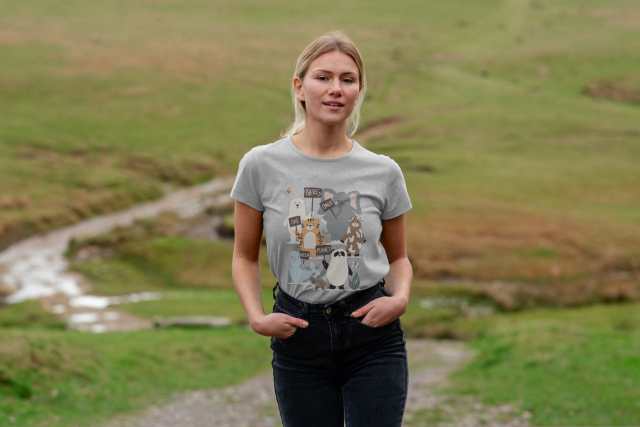A recent Instagram post by The Guardian US, garnering over 93,000 likes, highlighted a pressing issue in Chile – the vast quantities of used clothing being shipped into the country. Each year, Chile imports around 60,000 tonnes of secondhand clothes, making it the third largest importer of such items globally, according to the latest UN figures. While some of these clothes are resold in secondhand markets, a significant portion, approximately 39,000 tonnes, ends up illegally dumped in the Atacama Desert.
This practice has stigmatized the region, portraying it as one of the world’s dirtiest places. Ángela Astudillo, co-founder of Desierto Vestido, a non-governmental organization dedicated to raising awareness about this environmental crisis, describes the situation as dire. “This place is being used as a global sacrifice zone where waste from different parts of the world arrives and ends up around the municipality of Alto Hospicio,” she explains. Residents near the dump sites endure the sight of trucks unloading rubbish and the constant inhalation of smoke from burning clothes.
In response to this crisis, Desierto Vestido collaborated with Fashion Revolution Brazil and the Brazilian advertising agency Artplan to stage a fashion show amid the waste. This event, dubbed Atacama Fashion Week 2024, aimed to draw attention to the environmental impact of textile waste and to demonstrate creative ways to repurpose discarded clothing.
The show featured designs by Maya Ramos, a stylist and visual artist from São Paulo, Brazil. Ramos crafted each outfit to symbolize different types of Pollution and their impact on the environment. The event was not only a fashion statement but also a stark visual representation of the urgent need for systemic change in how the world handles textile waste.
The influx of discarded clothing in Chile is part of a larger global issue. The fashion industry is a major polluter, responsible for about 20% of the planet’s wastewater and 10% of greenhouse gas emissions. The rise of fast fashion has exacerbated the problem, with consumers buying 60% more clothing than two decades ago, leading to 92 million tonnes of textile waste annually. Much of this waste ends up in the global south, creating severe environmental and social challenges.
Efforts to combat the problem include local authorities in Chile imposing fines for illegal dumping and the introduction of the “Law of Extended Responsibility of the Producer,” which holds importers accountable for waste management. However, this law does not yet cover clothing and textiles, leaving a significant gap in addressing the issue.


There’s Only One Green Planet by Tiny Rescue: Climate Collection
Related Content:
Easy Ways to Help the Planet:
- Eat Less Meat: Download Food Monster, the largest plant-based Recipe app on the App Store, to help reduce your environmental footprint, save animals and get healthy. You can also buy a hard or soft copy of our favorite vegan cookbooks.
- Adopt-a-Pet: Visit WildWatchers, a watchdog platform specifically designed for animal, earth, and wildlife warriors to actively give back, rescue, and protect animals and the planet.
- Reduce Your Fast Fashion Footprint: Take initiative by standing up against fast fashion Pollution and supporting sustainable and circular brands like Tiny Rescue that raise awareness around important issues through recycled zero-waste clothing designed to be returned and remade repeatedly.
- Support Independent Media: Being publicly funded gives us a greater chance to continue providing you with high-quality content. Please consider supporting us by donating!
- Sign a Petition: Your voice matters! Help turn petitions into victories by signing the latest list of must-sign petitions to help people, animals, and the planet.
- Stay Informed: Keep up with the latest news and important stories involving animals, the environment, sustainable living, food, health, and human interest topics by subscribing to our newsletter!
- Do What You Can: Reduce waste, plant trees, eat local, travel responsibly, reuse stuff, say no to single-use plastics, recycle, vote smart, switch to cold water laundry, divest from fossil fuels, save water, shop wisely, Donate if you can, grow your food, volunteer, conserve energy, compost, and don’t forget about the microplastics and microbeads lurking in common household and personal care products!
